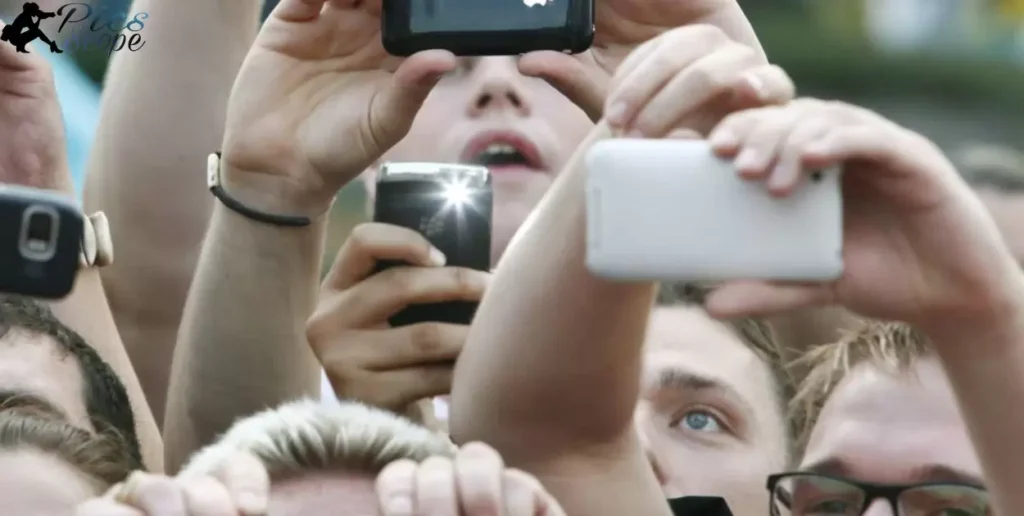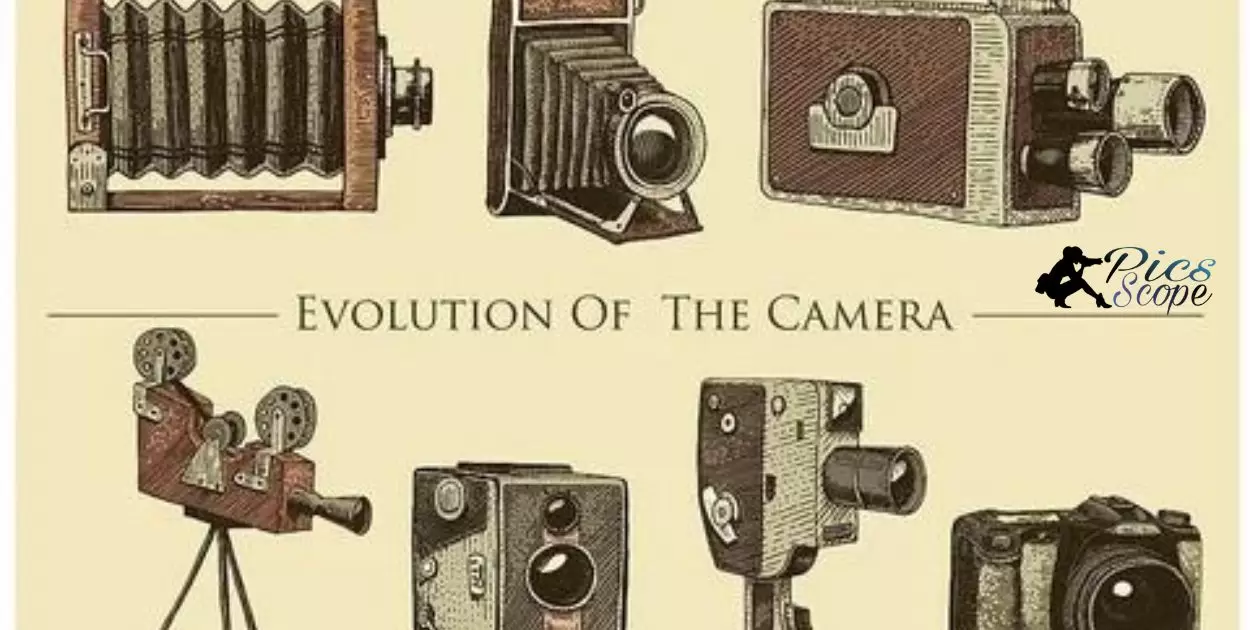Photography is the art and process of capturing still images, typically using a camera to record light. A photographer composes and frames a shot then uses a camera to expose film or a digital sensor to that framed image. The first permanent photograph was made in 1826 by Joseph Nicéphore Niépce using a camera obscura.
How Has The Invention Of The Smartphone Camera Changed Photography?. This question examines the impact smartphone cameras have had on the field of photography since the first smartphones with built-in cameras were introduced in the early 2000s.
Smartphone cameras now allow billions of people worldwide to take photographs anytime and anywhere with a multi-functional pocket device. Early smartphone cameras suffered from issues like low image quality and resolution compared to standard digital cameras.
How has smartphone camera technology evolved over time?
The first smartphone cameras appeared in the early 2000s and were very basic, with low megapixel counts, no flash, and limited software capabilities. Early issues included poor image quality, especially in low light conditions, lack of zoom or special effects, and slow processing times.
As smartphone technology advanced rapidly through the late 2000s and early 2010s, cameras saw parallel improvements in resolution, sensors, lenses, image processing, and software features. Today’s smartphone cameras can match or exceed the photo and video capabilities of many standalone point-and-shoot cameras.
Key evolutions enabling this progress have been advances in CMOS image sensors to allow more megapixels and better low light sensitivity, multi-lens systems for optical zoom and depth effects, and new semiconductor fabrication techniques to produce smaller pixels and reduce noise.
On the software side, computational photography techniques leverage smartphone processors to combine multiple exposures for better dynamic range, reduce shake, and enable special effects like bokeh. Camera apps also now offer sophisticated controls and editing options once limited to DSLRs and desktop software.
What were some early issues with smartphone camera image quality?

The earliest smartphone cameras suffered from very poor image quality compared to digital cameras of the time. With sensors limited to 1 or 2 megapixels, images showed obvious pixelation and lacked sharpness or detail, especially when viewing on a computer screen or printing.
The small lenses also produced heavy vignetting and corner shading issues. Without flashes or sufficient light sensitivity, low light photos exhibited excessive noise. Early smartphone cameras also had very slow shutter response, producing motion blur on anything but perfectly still subjects.
While megapixels and sensors gradually improved, it took advances in areas like optical image stabilization, autofocus capabilities, better aperture controls, and computational photography techniques to address these early image quality issues. Multi-lens systems have also been instrumental for improving dynamic range, reducing aberrations, and enabling optical zoom.
How rapidly have smartphone cameras improved in recent years?
The pace of innovation in smartphone camera capabilities has rapidly accelerated since around 2015. Each new flagship smartphone release now touts advanced camera hardware and computational photography capabilities that were unimaginable only a couple model generations earlier.
Megapixel counts, which were once the primary metric for smartphone cameras, have stabilized at 12 to 48MP as other aspects like sensors, lenses, image processors, and software have become more impactful. Specifically, recent years have brought dramatic improvements in low light sensitivity, color accuracy, fine detail preservation, and advanced features like portrait modes, night modes, and high frame rate 4K/8K video.
Smartphone cameras can now match DSLR performance in some areas thanks to multi-lens arrays, AI-powered processing, and leveraging capabilities of mobile chipsets. While early progress was gradual, today’s smartphone cameras improve by leaps and bounds with each new release cycle, producing images that many consumers now prefer over standalone point-and-shoot cameras.
What smartphone camera hardware and software innovations have enabled this progress?
On the hardware side, key innovations enabling rapid smartphone camera improvements include larger image sensors, multi-lens arrays, optical image stabilization, and phase detect autofocus.
Software and processing advances like computational photography, semantic segmentation, and AI-based editing tools have been equally impactful. Specifically, multi-lens systems with telephoto and ultra-wide modules produce sharper, better exposed images while enabling optical zoom, expanded dynamic range, and depth effects.
New semiconductor fabrication methods allow more megapixels without sacrificing light sensitivity or introducing noise. Optical stabilization and fast phase detect autofocus reduce motion blur and keep subjects sharply in focus. And specialized image processors now handle advanced computational techniques for HDR, low light exposures, and intelligent re-mosaicing.
On the software side, camera apps leverage smartphone processors and neural networks for real-time enhancements. Multi-frame captures are combined to reduce noise or boost dynamic range. Subjects and backgrounds are intelligently segmented using machine learning for artistic bokeh effects. If these features fail to deliver the desired results, one might consider the option to Sue A Photographer For Not Giving You Photos.
Powerful AI algorithms also enable sophisticated beautification tools and scene recognition to automatically adjust camera settings. These hardware and software innovations together have revolutionized smartphone photography in just the past few years.
How have smartphone cameras made photography more convenient?

Smartphone cameras have made photography exponentially more convenient compared to standard cameras. Having a capable camera already integrated into a device that most people carry with them everywhere eliminates the need to carry an extra camera. This allows capturing spontaneous moments more easily.
Smartphones connect to the internet and apps, enabling instant editing and sharing of photos that would otherwise require transferring photos to a computer first. Smartphone cameras provide features that improve convenience as well, like different lenses, modes, and settings that allow flexibility similar to standard cameras but without the burden of carrying extra equipment.
Many smartphone cameras also offer computational photography, using AI and algorithms to improve image quality in ways that basic cameras cannot. This gives smartphone cameras excellent quality despite hardware limitations.
How does having a camera in your pocket change spontaneous photography?
Having an integrated camera in your pocket at all times fundamentally changes spontaneous photography. Standard cameras, even small point-and-shoot ones, require intentionally bringing a dedicated device that needs to be turned on and prepared before shooting.
Smartphones eliminate this friction – the camera is always instantly accessible in your pocket, allowing photos to be taken spontaneously without planning ahead. This convenience and accessibility mean that smartphone cameras capture many candid moments of daily life that would otherwise be lost.
From funny moments with friends to beautiful sunsets, smartphone cameras empower photography in the moment. They facilitate photography as a constant part of life rather than being limited to planned events and trips. This changes photography into an ubiquitous creative outlet accessible to anyone with a smartphone.
What smartphone camera features improve convenience compared to standard cameras?
Smartphones offer many hardware and software camera features that improve convenience compared to standard cameras. These include multiple lenses like wide-angle and telephoto, portrait modes, automatic adjustment of settings to the scene, advanced HDR and low-light capabilities through computational photography, powerful built-in editing tools, and wireless connectivity for instant sharing of photos.
Most smartphone cameras also offer easy switching between photo and video modes, slow motion and timelapse modes, and features like burst mode for capturing fast action. The touchscreen interface makes changing modes and settings quick and intuitive as well. These features allow flexibility approaching higher-end standard cameras but in a lightweight always-available device.
How do connectivity and sharing capabilities aid convenience?
The connectivity and sharing capabilities of smartphones are key for convenient photography. After capturing photos and videos, smartphones allow instant wireless transfer, editing, printing and sharing from the same device.
This eliminates many tedious steps required by standard cameras, from connecting wires to uploading and organizing photos on a computer before sharing. Smartphone connectivity also enables instant backup of photos, whereas standard cameras require manual backup processes.
Image processing features like computational photography similarly improve photos instantly rather than needing editing later on a computer. Overall, the connectivity of smartphone cameras tightly integrates the entire photography and sharing pipeline into a single convenient device.
How has the ubiquity of smartphone cameras changed photography’s reach?
The ubiquity of smartphone cameras has dramatically increased the reach of photography. Smartphones with built-in cameras are now owned by billions of people globally, giving photography tools to many more people than just dedicated camera owners. This has decentralized and democratized photography, allowing many more people to capture and share images in their daily lives.
How many more people have access to basic photography tools now?
Smartphone adoption has exploded over the past decade, with around 3 billion smartphone users worldwide today. This means billions more people now carry a basic photography tool in their pockets daily. Compared to the era of film cameras and digital cameras, the smartphone camera. Has brought photography capabilities to a vastly wider global audience.
What are some examples of smartphone photography’s expanded applications and reach?
Smartphone cameras have enabled new applications and reach for photography. The ability to instantly capture, edit and share photos has changed how we document events, interact on social media, and more.
How has the volume of photographs taken changed since smartphone camera adoption?
The volume of photos taken has skyrocketed since smartphones with cameras became ubiquitous globally. Estimates suggest over a trillion digital images are now captured every year globally, with 85% coming from smartphones. The ease of smartphone photography has greatly increased the number of photos people take.
How has the rise of smartphone photography changed perceptions of photographers?
The rise of smartphone photography has made photography incredibly accessible and ubiquitous. Where photography was once seen as a specialized skill requiring expensive equipment. Smartphone cameras have enabled anyone to take photos and share them instantly.
Perceptions have changed so that people now view photography as an everyday activity rather than a domain reserved for professionals. Although professional photographers maintain respect for their skills, the role of “photographer” has become democratized. With billions of people carrying a camera in their pocket.
With billions of smartphone photographers, is photographer still a specialty?
While most people may take photos with their smartphone, professional photography remains. A specialty requiring artistic skills and technical knowledge the average person does not possess. Factors like composition, lighting, editing, and printing large high-quality photos. Make professional photography a craft that goes far beyond casual smartphone photography.
So while the sheer number of smartphone photographers has changed perceptions, there is still a place for professional photographers to create more thoughtful, deliberate, and artistic photographic work.
How has improved quality challenged notions that smartphone photography is inferior?
Smartphone cameras have made tremendous strides in image quality, challenging the notion that they are inferior to dedicated cameras.
- Multi-lens systems, larger sensors, and advances like pixel binning have enabled smartphones to capture more light and detail.
- Computational photography techniques leverage powerful mobile processors and AI to enhance photos through HDR, noise reduction, sharpening etc.
- Specialized hardware like LiDAR scanners bring sophisticated focusing and depth effects once limited to DSLRs.
- Manual shooting modes and editing apps grant more creative control over exposures, editing and sharing.
While smartphones face physical constraints around sensor size and lens optics, their imaging capabilities now suffice for most casual photographers. For many purposes like posting online, smartphones can actually outperform entry-level point-and-shoot cameras. So the quality gap has narrowed considerably, even if high-end cameras retain an edge.
What other misconceptions about smartphone photographers persist?
Some persist in seeing smartphone photography as less thoughtful and more mindless documentation compared to professionals carefully planning and executing a photo shoot. However, many smartphone photographers put great care into their composition and editing.
People perceive smartphone photos as being shared only ephemerally online instead of being printed and displayed, but Instagram and similar apps have established a new form of public gallery for smartphone photography
While the technology has changed, photography remains a creative outlet for self-expression, regardless of the device used. As smartphone cameras continue to advance, fewer and fewer misconceptions remain about the capabilities of smartphone photographers.
What does the future hold for smartphone camera capabilities and photography?

The future of smartphone cameras and photography is very promising. As the search results show, smartphone cameras have already improved tremendously over the past decade in terms of resolution, image quality, low light performance, and shooting modes.
We can expect continued refinements and innovations in camera hardware like more advanced sensors, better image stabilization, periscope zoom lenses, and upgrades to video recording capabilities. Software advancements through computational photography and AI will also open up new creative possibilities.
What potential remains for improving smartphone camera hardware and computation?
Smartphone cameras have come a long way, but there remains significant potential for improving hardware and computation capabilities.
| Area | Potential Improvements |
| Sensors | Larger sensors, higher megapixels, better low-light sensitivity through advances like RGBW and stacked CMOS |
| Lenses | Wider apertures, folded optics, periscope telephoto zoom |
| Image Stabilization | Sensor shift, dual OIS, algorithms to enable long exposures |
| AI Capabilities | Scene recognition, subject tracking, automatic adjustments via neural networks |
| Specialized Hardware | Additional spectral and depth sensors, AR modules |
| Processing Power | More advanced ISPs and ML accelerators for computational photography |
There are still considerable opportunities to keep enhancing photographic abilities of smartphone cameras through innovative optics and mechanical designs. But much potential also lies in advancing onboard processing via mobile chipsets and software algorithms to elevate image quality. Computational photography will likely be a key driver of progress.
How might augmented reality, filters and editing evolve smartphone photography?
Smartphone software has enormous potential to transform mobile photography through immersive edits, filters and augmented reality. Real-time segmentation and depth sensing can enable sophisticated background replacement and 3D effects.
More photography apps will harness AI to automatically improve aesthetics, apply artistic filters, and even guide novice users. And AR will blur lines between the physical and digital, allowing virtual objects and overlays in camera views. While smartphone hardware has its limits, software advancements can greatly expand creative possibilities.
Could smartphone cameras fully replace standard cameras someday?
It’s unlikely smartphone cameras will fully replace DSLR and mirrorless cameras used by professionals and enthusiasts. Those cameras have much larger sensors and high-quality interchangeable lenses that smartphone cameras cannot physically match.
But for casual users and specific use cases like social sharing, smartphones already offer good enough quality and unmatched convenience. So while the capabilities gap will narrow over time, standard cameras will continue serving more demanding photographers. Most consumers however will find smartphone cameras meet all their photography needs.
FAQ’s
What is the impact of smartphone photography?
Anyone with a mobile device can now access high-quality photography thanks to smartphone photography, which has changed how we capture and share photos.
How has technology changed photography?
Advances in digital technology like smartphone cameras, internet connectivity, and photo editing software have transformed photography by increasing access and expanding creative possibilities.
What were the changes brought by the invention of photography?
The invention of early photographic processes in the 19th century allowed the precise mechanical capturing of visual reality, recording history, events and people with unprecedented accuracy.
What is one impact of the invention of photography
An early impact of photography was that it allowed people to have images of their loved ones. These images served as keepsakes. Before photography, having painted portraits was not a common occurrence for ordinary people.
Conclusion
The invention of the smartphone camera has greatly changed photography over the past few decades. Philippe Kahn invented the first camera phone in 1997. His invention combined a digital camera with a mobile phone. This innovation has become an essential feature of modern smartphones. Today, billions of people worldwide use this technology.
The convenience, accessibility, and connectivity provided by smartphone cameras have made photography extremely popular as both an everyday activity and an art form. The invention of the smartphone camera has marked a significant turning point in the history of photography. Smartphone cameras have revolutionized how people capture, edit, share, and view photographs.
While they may lack some of the advanced capabilities of dedicated cameras, smartphone cameras have democratized photography and made it incredibly easy for anyone to be a photographer. The impact of the smartphone camera continues to unfold, but it is clear these devices have changed photography profoundly.







